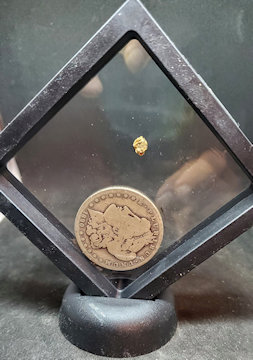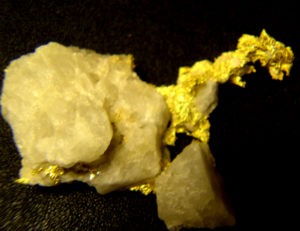River Gold Nuggets
Tasmanian Gold Prospectors.
River gold sniping in Tasmania. Tasmania is an island state of Australia. It is located 240 km (150 mi) to the south of the Australian mainland, separated from it by the Bass Strait.
River Gold Nuggets
Tasmanian gold nuggets.

River Gold Nuggets
From Wikipedia, the free encyclopedia:
Traditionally, Tasmania’s main industries have been mining (including copper, zinc, tin, and iron), agriculture, forestry, and tourism. Tasmania is on Australia’s electrical grid and in the 1940s and 1950s, a hydro-industrialisation initiative was embodied in the state by Hydro Tasmania. These all have had varying fortunes over the last century and more, involved in ebbs and flows of population moving in and away dependent upon the specific requirements of the dominant industries of the time. The state also has a large number of food exporting sectors, including but not limited to seafood (such as salmon, abalone and crayfish).
1840: Lefroy, Tasmania
Gold is believed to have been found in Northern Tasmania at The Den (formerly known as Lefroy or Nine Mile Springs) near George Town in 1840 by a convict. In the 1880s, this became known as the Lefroy goldfields.
1847: Beaconsfield, Tasmania
It is said that John Gardner found gold-bearing quartz in 1847 on Blythe Creek, near Beaconsfield, on the other side of the Tamar River from George Town.
1849: Lefroy, Tasmania
The first substantiated find of gold in Tasmania was reported to have been made by a Mr Riva of Launceston, who is stated to have traced gold in slate rocks in the vicinity of The Den (formerly known as Lefroy or Nine Mile Springs) near George Town in 1849.
1851–1886: Managa and other finds in Tasmania
Woods Almanac, 1857, states that gold was possibly found at Fingal (near Mangana) in 1851 by the “Old Major” who steadily worked at a gully for two to three years guarding his secret. This gold find was probably at Mangana and that there is a gully there known as Major’s Gully.[126] The first payable alluvial gold deposits were reported in Tasmania in 1852 by James Grant at Managa (then known as The Nook)[42] and Tower Hill Creek which began the Tasmanian gold-rushes. The first registered gold strike was made by Charles Gould at Tullochgoram near Fingal and Managa and weighed 2 lb 6ozs. Further small finds were reported during the same year in the vicinity of Nine Mile Springs (Lefroy). In 1854 gold was found at Mt. Mary.[127] During 1859 the first quartz mine started operations at Fingal. In the same year James Smith found gold at the River Forth, and Mr. Peter Leete at the Calder, a tributary of the Inglis. Gold was discovered in 1869 at Nine Mile Springs (Lefroy) by Samuel Richards. The news of this brought the first big rush to Nine Mile Springs. A township quickly developed beside the present main road from Bell Bay to Bridport, and dozens of miners pegged out claims there and at nearby Back Creek. The first recorded returns from the Mangana goldfields date from 1870; Waterhouse, 1871; Hellyer, Denison, and Brandy Creek, 1872; Lisle, 1878 Gladstone and Cam, 1881; Minnow and River Forth, 1882; Brauxholme and Mount Victoria, 1883; and Mount Lyell, 1886.
River Gold Nuggets
#######
Visit our site to view real gold nuggets and prospecting equipment:
https://california-gold-rush-miner.us
Be sure to view our Gold nuggets for sale.
View our Natural Silver specimens, Visit our Old West Collections & Unique & Unusual page

Part of our Old West Collection ‘Silver & Gold’ -Gold nugget & Morgan silver dollar in display frame – A real super unique gift!
Also see the most expensive type of gold nuggets, the Crystalline Gold Nuggets

Crystalline gold
Subscribe to our Youtube Arizona Gold Prospecting channel
0 Comments